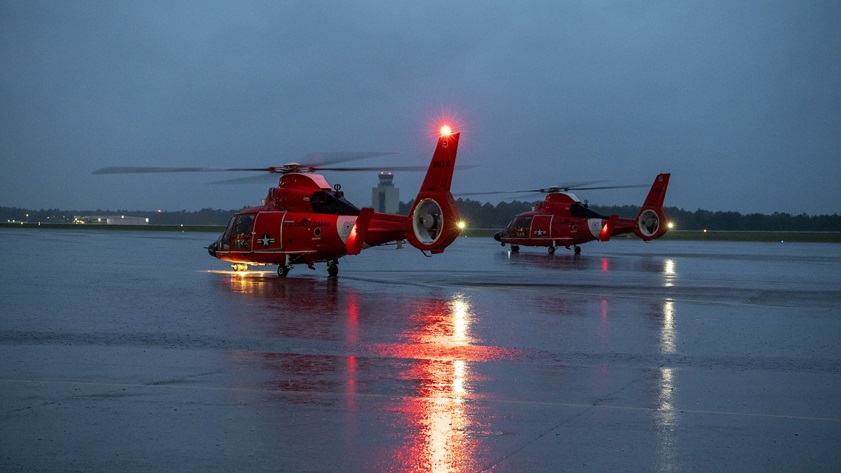Pilots line up to help in Ida's wake
Groups shift focus to target needs in disaster area
Thousands of aircraft and pilots awaited word from Louisiana on August 31 that it was time for general aviation to join a massive relief effort to help those who were in the path of Hurricane Ida’s torrential rain and damaging wind, just 7 mph shy of Category 5 strength at landfall. Nonprofit organizations with a history of disaster response quickly compiled a long list of available aircraft and volunteers to crew them, but conditions in the hurricane impact area remained challenging—even after the weather improved.
About 1 million utility customers remained without power September 1, approaching three full days after Hurricane Ida made landfall on August 29 near Port Fourchon, Louisiana. The slow-moving storm lashed the state with 150-mph sustained winds and caused widespread damage. Six deaths had been attributed to the storm, though officials feared the toll would climb as many survivors endured oppressive heat in damaged homes without electricity or water. Impassible roads and compromised communication networks that had hindered the first search-and-rescue efforts were largely restored, though hot food and cool shelter, along with gasoline to run generators, were still in short supply in many places.
Operation Airdrop mustered pilots to deliver hot meals to the coastal region south of New Orleans that was most affected by the powerful hurricane. The Washington Post reported August 31 that hot meals were also being served by World Central Kitchen. It was not immediately clear how that operation, led personally by WCK founder and Chef José Andrés, would affect the needs on the ground and the missions for GA groups in the area.
Aerobridge, another GA nonprofit with a history of disaster response, continued to focus on flying donated emergency supplies staged in Pensacola, Florida, and Shreveport, Louisiana, to Houma-Terrebonne Airport in Houma, Louisiana, and South Lafourche Leonard Miller Jr. Airport in Galliano, Louisiana.
By September 1, critical roadways were open and expected truck deliveries reduced the need for light aircraft arrivals, though Aerobridge spokesman Charley Valera noted on the group’s Facebook page that “so many areas have been forgotten.” Valera posted a text message received by the organization August 31 from a family member of a storm survivor who was stuck in an apartment complex in Houma, where water and electricity have been out since the storm. The unnamed family member reported: “people are getting desperate and were eating raw ground meat today bc they are hungry … he’s getting anxious bc he sees no helicopters or hasn’t heard of any help coming.”
A video taken from an aircraft flying low over a storm-ravaged coastal community was posted August 31 on the Aerobridge Facebook page, a scan of the destruction Ida wrought with a message from Valera: “We’re on our way, folks.”
Valera reiterated in later days that Aerobridge “is still flying and accepting donations. Thank you all.”
Echoes of Katrina
Hurricane Katrina, which struck in 2005 on the same date that Hurricane Ida made landfall, was assessed by many survivors in media accounts as the lesser of the two mega-storms. Louisiana Gov. John Bel Edwards on August 31 urged those who had evacuated the city ahead of Ida not to return any time soon.
“Historically, we know that most people are injured and killed because of the response, not the storm itself,” Edwards said during a news conference, explaining that power, water, and other critical infrastructure remained out of service in the city and “many of the life-supporting infrastructure elements are not present, they’re not operating right now.”
New Orleans largely escaped the worst of Ida, thanks to the storm’s westerly track and a multibillion-dollar federal project to upgrade levees and pumps around the city to prevent a repeat of the Hurricane Katrina disaster, in which subsequent flooding devastated neighborhoods that have never fully recovered. Airports south and west of the city bore the brunt of the immediate damage.
The Houma airport was directly in the path of the historic storm. Video posted by The Weather Channel showed extensive damage to hangars and to aircraft inside, with some aircraft squashed nearly flat and most showing signs of significant damage.

“We’re hearing roads are open, but some are impassible,” said Brad Pierce, an Aerobridge volunteer pilot who flies a Cirrus SR22, in a phone interview August 31. Pierce, eyeing more inclement weather along the route from Florida, was contemplating a drive to Louisiana, and said he had been advised to bring extra tires because roads remain scattered with debris. “That’s where the air game still comes in. Yeah, there are roads, and they might be passable, but there’s no fuel, and there’s no electricity. It’s not a normal afternoon in New Orleans.” Pierce said conditions on the ground were not expected to rapidly improve.
Lack of electricity and gasoline compounded the woes of storm survivors. All eight of the power transmission lines running New Orleans, and also serving communities closer to the storm’s landfall, remained out of service. Government and utility officials warned it would take days just to assess the damage. Major losses included a transmission-line tower that collapsed into the Mississippi River upstream of New Orleans in Avondale. Restoration of power was expected to take weeks in many cases. The surge of water and onshore winds had reversed the flow of the Mississippi River for a period of hours on August 29, a rare but not unprecedented event.
New Orleans Lakefront Airport Director Bruce Martin said in a telephone interview August 30 that he had ridden out the storm with a small team of firefighters at the airport, which was largely flooded and would remain closed until September 1, at the earliest. Martin said that from his perspective, the combination of wind and flooding—particularly the flooding—with Ida will be remembered as the worst hurricane he has personally experienced.
“It’s unlike any hurricane I’ve been a part of,” Martin said.
AOPA Content Producer David Tulis contributed to this report.





